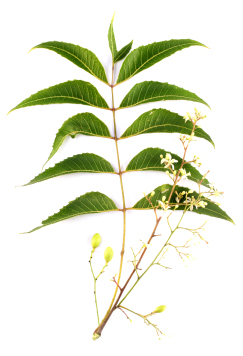 Organic Pesticide Profile: Neem Oil
Organic Pesticide Profile: Neem Oil
(click here to download this profile from my personal Gardening Guide)
This is one of my favorite organic pest controls. I learned about it several years ago and I’ve used it ever since, with great successes. I hope you find it useful too!
Neem oil is extracted from the seeds of the Neem Tree (Azadirachta indica). For thousands of years it has been used in India’s Ayurvedic medicine tradition for everything from toothpaste to a contraceptive. It is also used as a flea and tick repellent for dogs and other animals, and in the 1980’s Neem oil was registered with the US EPA as a pesticide. It’s very effective as both a pest control treatment and preventative, and when applied correctly, it will not harm beneficial insects. Keep in mind, that like many natural substances, Neem oil can be toxic so you’ll want to understand proper use of the product before applying it on your plants.
How it Works
Neem oil is a contact and systemic, all-natural pesticide, found to be useful in treating over 200 species of pests (especially their eggs) and some common fungal diseases. It is especially good for treating and repelling, leaf-eating insects. When applied as a preventative, it is drawn up by the plant’s roots and deposited throughout the plant’s tissue. The smell alone can prevent many insects from snacking on the plant. When sprayed on the foliage, it forms a film on the plant’s leaves, essentially suffocating pests and their larvae, which are then prevented from transitioning to the pupal stage and they die soon afterwards.
Once dry, insects are safe to land on the neem oil sprayed foliage; however, once they begin to feed on the leaves and ingest the Neem oil, a neurological change will occur and the insect will “forget” to eat and reproduce, and will die within a few days. Keep in mind that Neem oil will not kill entire colonies on contact, it will take a few days to stop the life cycle of the pest.
Many beneficial insects are not leaf-eating, so Neem oil is safe for many beneficial insects like butterflies, honeybees and ladybird beetles (also known as ladybugs), once it is dry.
How to Use
